Here’s the deal:
My ability to travel the world is only possible because I know how to generate targeted traffic.
So today want to share a few tips that have helped me grow Backlinko to more than 100k unique monthly visitors.
Without further ado, let’s jump right in:
#1: Forget social media. Make THIS your #1, #2 and #3 priority
Derek Halpern said it best:
“If you’re not building an email list, you’re an idiot.”
#truth
It’s funny:
Every now and again someone will pull me aside at a conference and say:
“Brian, I’m working my butt off on content. But I still don’t get as much traffic as I should”.
I usually reply with:
“Well, how big is your email list?”
That’s when their face starts to turn red.
After all, everyone KNOWS that they should build their email list…
…but I find that very, very few marketers make list building a priority.
And it KILLS their ability to generate traffic.
Here’s an example to illustrate my point:
About 2-weeks ago I published a new case study on the Backlinko blog:
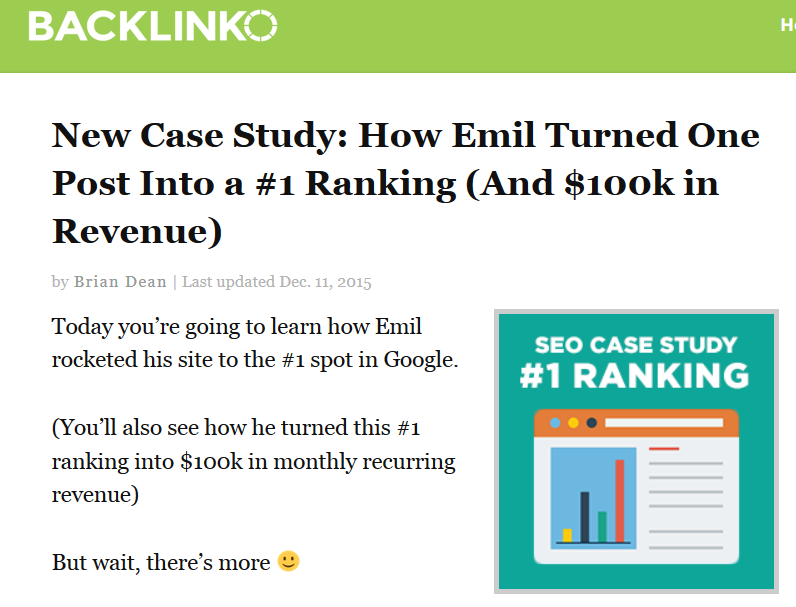
And I sent out an email and a tweet to spread the word.
Now:
The email generated nearly 7k clicks.
The tweet?
69!
The email brought in literally 100x more visitors.
(To be fair, my email list is 3x bigger than my Twitter following. But it’s still a massive difference)
Bottom Line: If you want more traffic, SEO is (clearly) your best bet. But an email list is #2.
#2: Find untapped keywords with this hugely popular site
When it comes to keyword research, you have two options:
Option 1: Target competitive keywords and go toe-to-toe with big brands.
Option 2: Find untapped keywords that your competition doesn’t know about.
Guess which is better 😀
Unfortunately, most people start the keyword research process off by firing up the Google Keyword Planner.
Big mistake.
Yes, the GKP has its place.
But it has one fatal flaw:
It shows the same keywords to everybody (including your competition).
So instead of the GKP, head over to this little known site called Reddit (HA!).
For example, let’s say that you run an ecommerce site that sells headphones.
You’d go to Reddit, and enter a keyword like “headphones”.
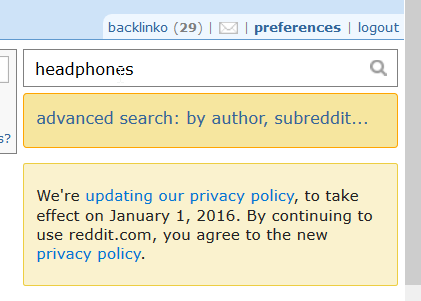
Then skim the threads that come up in the search results.
#3: Use this proven approach to get more traffic from SEO
Most people will tell you that, “the higher you rank, the more clicks you’ll get”.
And that’s true…most of the time.
But there’s A LOT more to it than pure SERP positioning.
After all, a Google searcher considers all this stuff when they’re deciding what result to click on:
* Eye-catching title
* Eye-catching description
* Brand recognition (a searcher is more likely to click on a site they know and trust)
* How well the result fits what they want
* The promise the result offers (the more concrete, the better)
* How unique the result it compared to the rest of the page
* Lots more
So don’t ignore the way your result appears in Google.
After a lot of experimenting, I’ve found that a higher organic CTR brings in more traffic…
…and actually boosts your ranking for that keyword.
Bottom Line: Yes: The higher you rank, the more clicks you get. But don’t let a #7 ranking get you down. Instead, work hard to make your title and description tag more compelling and click-worthy.
I hope these tips help give your traffic stats a shot in the arm.
I’m happy to say that, today, Backlinko brings in over 100k unique visitors per month:

And all of this high-quality organic traffic fuels my growing online business that’s nearly doubling in gross revenue every year:

Now I’ll show you how I did it in a minute.
But First, I Want to Tell You Something Important:
You can totally do this!
- Even if you’ve struggled in the past
- Even if you’re a “one man show”
- Even if you run an ecommerce site
- Even if you have clients in boring industries
After all, I’m not the only one that’s growing their online business using a unique approach to white hat SEO:
*Aaron Johnson created a hiking guide that outranks Wikipedia and Trip Advisor
*Darren Dematas boosted his ecommerce site’s traffic by 259%
*David Peralta recently hit Google’s first page for the keyword: “sales advice”
Here’s The Framework Aaron, Darren and David Used Used To Achieve These Impressive Results
The simple fact about succeeding with white hat SEO is this:
You simply can’t do what everyone else is doing and expect to get results.
(That’s the “Do The Opposite Framework” I told you about earlier this week)
As a refresher, that framework is:
Do The Opposite Framework
If you follow the same SEO advice as everybody else, there’s no way you can win. That’s because you’re playing the game by the same rules as everyone else (including big brands).
But with the Do The Opposite Framework, you do the opposite of everyone else. That’s the secret to beating your competitors in Google.
How about an example?
With my first blog I launched in 2010, I blindly followed the SEO advice that I read online.
And every blog post I laid eyes on said the same thing:
“The key to ranking in Google is to keep your site updated with fresh, quality content.”
So that’s exactly what I did.
I updated my site like a madman. Sometimes I’d even publish two quality articles a day.
And I made sure to share my content on Facebook.
Unfortunately, despite all that hard work, my traffic was as flat as a pancake:

Today, I Understand EXACTLY Why I Struggled…
It’s because I was doing the exact same thing as everyone else!
My competitors were pumping out tons of content. So was I.
My competitors published new post at least once a week. So did I.
My competitors didn’t do any outreach or strategic content promotion. Neither did I.
Do you see what’s happening here?
As long as I played by the same rules my competitors did, I had no chance (especially because I was competing against big brands).
Today, I Use the “Do The Opposite Framework” with Backlinko’s SEO…
As you may know, most marketing blogs publish a new post every day or week.
But I do the opposite.
I publish a new blog post every 4-6 weeks. In fact, I’ve only published 32 total posts at Backlinko so far:

Despite that (actually, BECAUSE of that), Backlinko has brought in over 1 million unique visitors over the last year:

Now you might say to yourself, “But Brian…you’re different!” But I promise you I’m not.
In fact, I’ve had many of the same problems you may have right now, like:
#1: “I’m already doing well with SEO. Now I want to scale up. The thing is, I’m a one man show going with big brands. Can I really scale if I’m doing it all myself?”
#2: “I know how to write great content. But need to get better at promoting it.”
#3: “I run an ecommerce site. Will white hat SEO really work for me?”
#4: “I have a client in boring a boring niche. Can I really create something people will actually share?”
If any of these sound familiar to you, you’re not alone.
While these problems are real, they CAN be fixed.
And today I want to help you overcome these common SEO hurdles.
Let’s start off with challenge #1:
#1: “I’m already doing well with SEO and I want to scale up. But I’m a one man show competing with big brands. Can I really scale if I’m doing it all myself?”
Short answer: YES.
Just look at Aaron Johnson…

Aaron runs the hiking site, DayHikesNearDenver.com.

Even though Aaron’s site generated an impressive 630k visitors in 2014, he knew that he could do better.
That was the good news.
Here’s the bad news:
Google’s first page was littered with mega brand travel sites, like Tripadvisor and The Denver Post.
And Aaron would have to outrank these authority travel sites if he was going to scale his success.
And to do THAT, he couldn’t publish brief overviews of 100 different hiking trails.
Why?
Because that’s exactly what his competitors were doing.
For example, here’s the type of content Aaron’s competitors were putting out about one of the most popular hiking trails in Denver (called Hanging Lake):

(This article is a superficial overview of the trail)

(Here’s a boring black and white PDF from the USDA)
These big sites could get away with this mediocre content because they had massive authority and social media followings.
But Aaron didn’t have a huge following.
So he did the opposite.
Instead of 100 trail guides, he wrote ONE. And he made it amazing.
In fact, Aaron’s guide is so insanely thorough that it needs a table of contents:

But his guide isn’t just 3000 words of fluff. Aaron packed his guide with meaty value.
For example, Aaron included directions to the trailhead…

…and tips for taking photos of the trail:

To go “the extra mile”, Aaron even took his family to Hanging Lake so he could personally record info and take pictures:

Because Aaron did the opposite of his entrenched competitors, he now ranks in the top 5 for several of his target keywords, including “hanging lake Colorado”:

But for Aaron to get those rankings, he didn’t just “publish and pray”.
He actively promoted his new guide. Which leads us to common SEO roadblock #2…
#2: “I know how to write great content. But need to get better at promoting it.”
Yes you do 🙂
But seriously, you do.
There are two things you want to keep in mind about content promotion:
1. Content promotion ONLY works if you have something worth promoting.
This is a big one.
I get at least 4 emails per day from people that ask me to share mediocre stuff.
And I delete them all.
Yes, sometimes their email scripts are really good.
But the script doesn’t matter because their content isn’t something I’d want to share with the Backlinko Community.
2. Content promotion isn’t rocket science.
Yes, I follow a content promotion system for every piece of content that I publish. And it works REALLY well.
But my approach to content promotion is simple.
It doesn’t involve anything complicated like Facebook ad campaigns or timing my tweets.
In fact, my entire approach looks like this:
Step 1: Find people that want to read my content
Step 2: Send those people my content
Step 3: Get links, shares and traffic
Seriously. That’s it.
Let’s go back to Aaron for a second.
Once Aaron’s guide went live, it was time for him to promote it.
Now:
Most of Aaron’s big brand competitors could share their content with their huge Facebook audiences and called it a day.
But Aaron didn’t HAVE a big audience.
So he did the opposite.
Specifically, he emailed people that might be interested in his guide.
Here’s an example of an outreach email that Aaron sent out:

Because Aaron sent emails to people that wanted to read his guide, he received an overwhelmingly positive response:

And these outreach emails led to backlinks from serious authority sites, like Colorado.com (DA81):

Not surprisingly, these high-quality white backlinks boosted Aaron’s traffic to his guide by 694%:

#3: “I run an ecommerce site. Will this white hat SEO stuff really work for me?”
It never fails…
Whenever I recommend that people publishing amazing content on their site, I get a comment like this:
“Brian, that might work for a blog. But I run an ecommerce site. How can I use this white hat SEO stuff?”
Here’s an example:

Look:
I totally understand where ecommerce site owners are coming from.
Your goal with SEO is to rank your product and category pages so you can sell more stuff.
Nothing wrong with that.
But here’s the deal:
If you think you can rank a site made up of 100% product and category pages, you’re in for a world of frustration.
Because the fact is, you need backlinks to rank.
And no authority site is going to link to a bunch of product or category pages.
But there’s an upshot:
You CAN use content marketing to boost your product and category page rankings.
And it’s not even that hard.
All you need to do is add a handful outstanding articles to your ecommerce site.
For example, let’s look at ecommerce entrepreneur Darren Dematas.

Darren runs the camping and survival gear ecommerce website, topspecus.com:

Like many ecommerce entrepreneurs, Darren was a new player in a super-competitive industry.
Most people in his position would create a bunch of product pages and hope for the best.
But Darren did the opposite.
Darren decided on day 1 that he was going to use white hat SEO to generate more targeted traffic (and sales).
Specifically, Darren created a high-value roundup post, called “Pistol Shooting Tips From 20 Sharpshooters”:

And because this post attracted quality backlinks, it boosted the rankings of one of his important category pages (heavy duty bags) by 259%:

Bottom line?
If you run an ecommerce site, you CAN (and should) use content marketing to get more traffic and sales.
In fact, because most of your competitors aren’t using it, content can be a big competitive advantage for you.
#4: “I have clients in boring niches. Can I really create something people will actually share?”
Have you ever said this to yourself?
“It’s really challenging to create content that’s shareable and linkable in my industry.”
If so, you’re far from alone.
Back when I ran my SEO agency, I ran into this problem all the time.
I’d have clients that were in industries that I never even knew existed.
It wasn’t easy, but over the years I learned that you CAN create content in any industry…
…even if that niche happens to be boring.
Just take a look at David Peralta.
David is an SEO That Works graduate that heads up content marketing at iSEEIt, a mobile CRM tool.

Now:
David is in a B2B space that has ZERO mass appeal.
Most people in David’s position would assume that white hat SEO simply won’t work in a B2B space like his.
And they’d focus on paid traffic.
But David did the opposite.
David created an awesome guide aimed at salespeople called, “70 Top Sales Pros Reveal Their Most Impactful Sales Advice Ever”:

And it was a huge, huge hit.
Just look at the numbers from this single guide:
- 2400 visitors in 3 days
- 2000+ social shares
- 366% more email subscribers
- 31 backlinks
One of David’s 31 backlinks came from one of the most authoritative sales blogs online, Hubspot:

Because David’s content performed so well, it ranks for a keyword that his target customers search for everyday: “sales advice”.

Here’s What To Do Right Now
You can see that, no matter what challenges you’re facing, you can totally do this!
(And I didn’t just tell you. I showed you real life examples of people just like you that are crushing it with SEO right now)
In the next installment of this series I’ll send you more details on how you can get more traffic with the “Do The Opposite” approach to SEO.
But right now it’s time to hear from you.
Leave a comment below to let me know which SEO struggle from this article you relate to most.
Maybe you need more help with content promotion.
Or maybe you have trouble scaling up your current SEO success.
Either way, let me know by leaving a quick comment right now

If you’ve ever wondered:
“I know I need to promote my content…but I’m not sure how.”
“My content is great. But my blog feels like a ghost town.”
“How can I email influencers in my niche without being a pushy jerkface?”
“I publish A TON of unique content on my site. But I still don’t rank in Google.”
Then you’ll LOVE today’s article.
Because today I’m going to reveal the secret to promoting your content (the right way).
I’ve got a lot to cover so let’s dive right in…
Why Most People Struggle With SEO (Real Talk)
Most people think the key to higher rankings is to “publish great content”.
So they open their laptop, crack their knuckles, and bang out article after article of “great content.”
And what happens when that doesn’t work?
They think,”I guess I haven’t published enough great content. Time to put a pot of coffee on and write another article…”.
Well, here’s the truth:
Publishing great content puts you in line with the thousands of other people doing the EXACT SAME THING.
Trust Me, I’ve Been There…
I’m not afraid to say it:
My first few sites were epic failures.
And looking back, it’s no surprise why.
At the time I thought the formula for white hat SEO looked like this:
Great content + more great content = #1 rankings.
Face…meet palm.
Now I know better.
Today I’m laser-focused on content promotion.
In fact, I’d say that spend more time promoting than writing.
And thanks to my tested content promotion strategies, Backlinko generated over 100,000 unique visitors last month:
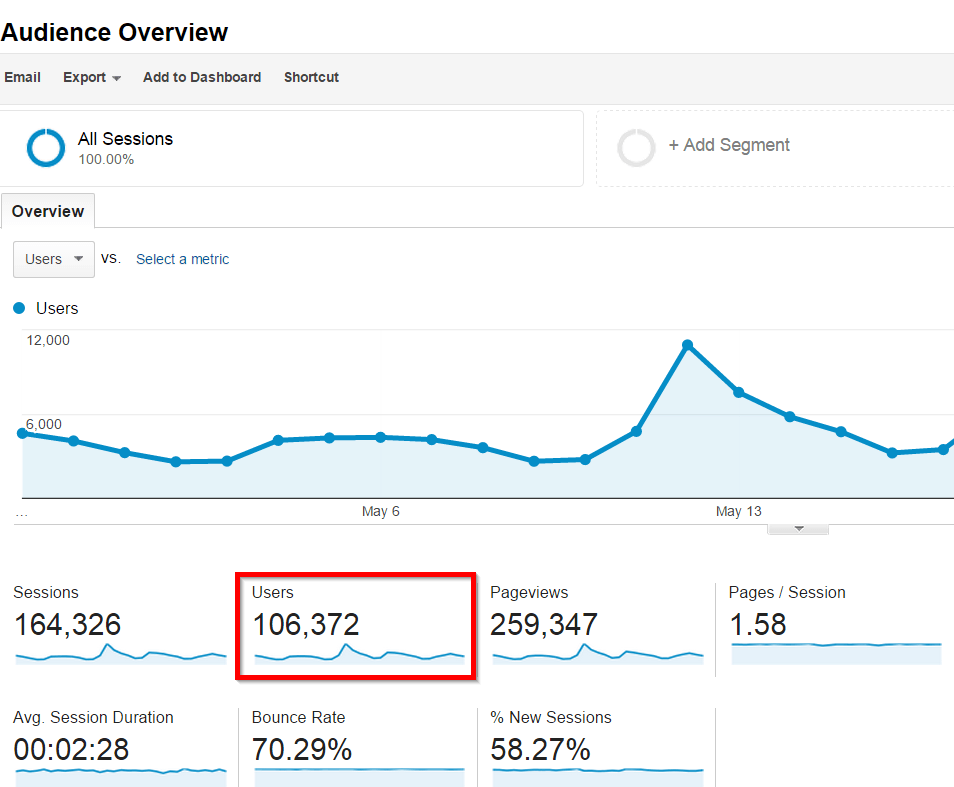
And because I know how to generate targeted traffic on-demand, I have the freedom to do what I want…when I want.
A few months ago I decided to go on a 5-week backpacking trip through Indonesia and Thailand.
Because I run my own business, I didn’t need to stress over budgets or schedules. The cost and dates were minor details.
I booked my flight figured out the rest later.
Here’s me at Borobudur temple in Java:

But this type of freedom is only possible if you know how to generate targeted traffic.
And bringing in targeted traffic is ONLY possible if you learn how to promote your content (the right way).
A Real-World Example of Content Promotion Done Right
Let’s face it:
For most marketers, content promotion is a HUGE struggle.
Despite that fact, there are people out there that promote their content with ease…
Take Sue Anne Dunlevie for example.

Sue runs SuccessfulBlogging.com, a blog that helps entrepreneurs get more leads and sales.
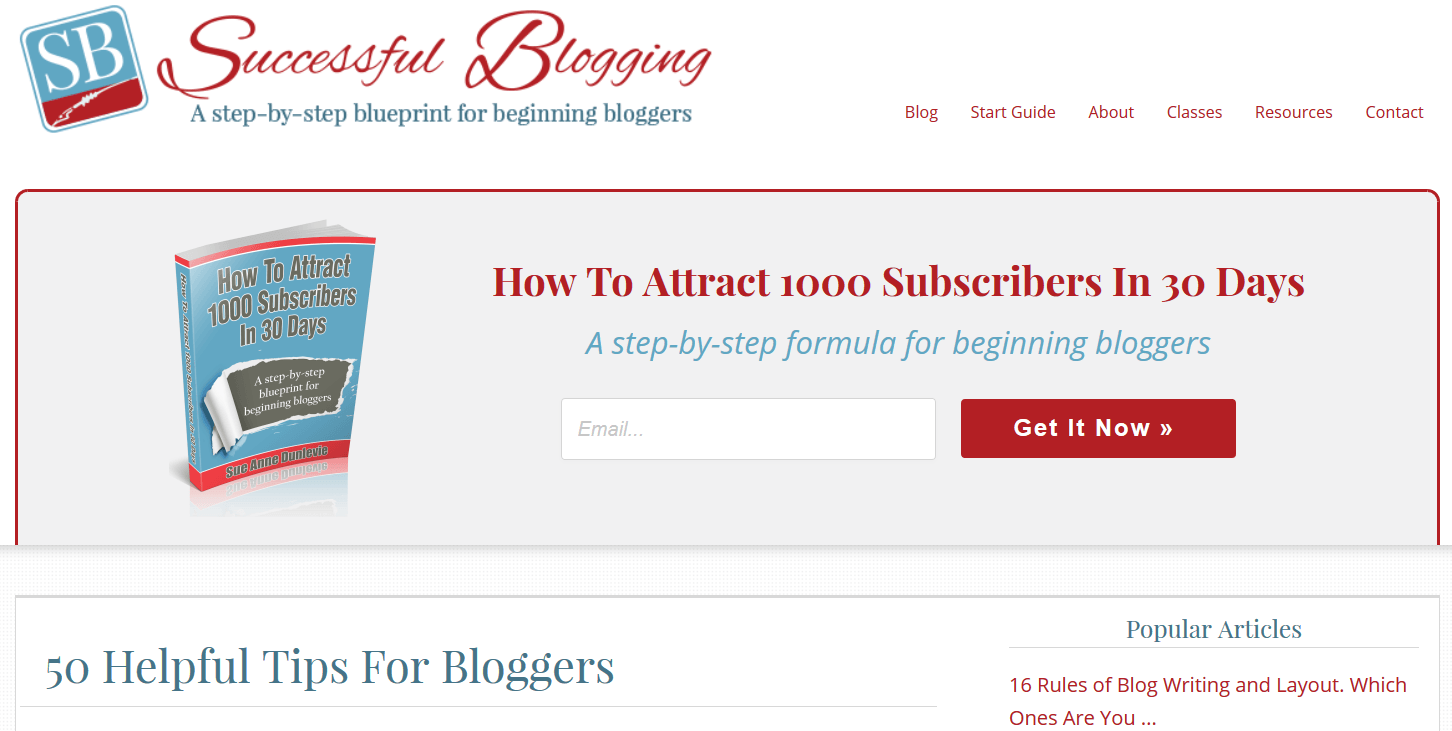
When Sue first started her blog, she’d publish a new blog post every week…like clockwork.
Instead of promoting her new post, she’d fire up WordPress and start working on NEXT week’s post.
And despite all this content creation, Sue’s traffic wouldn’t budge:
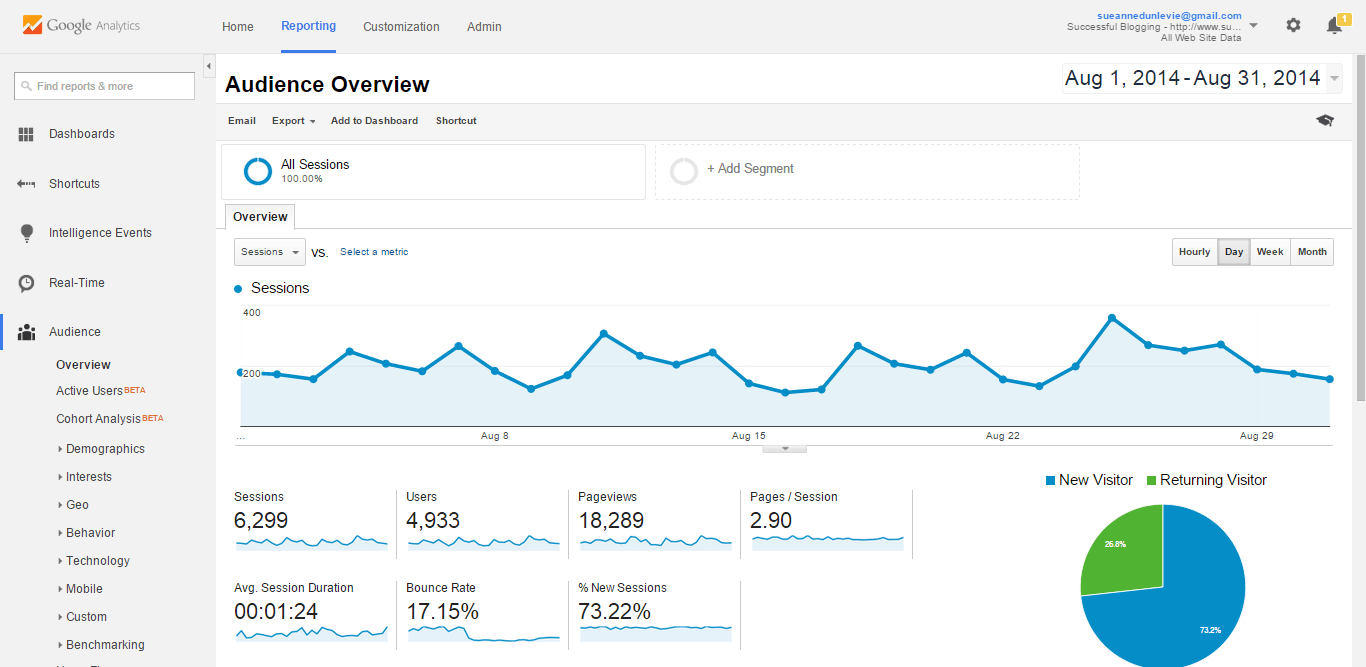
After months of banging her head against a wall, Sue decided to switch things up.
Instead of HOPING that her content performed, Sue committed herself to strategic content promotion.
And Here’s What Happened Next…
Thanks to strategic content promotion, Sue’s traffic has increased by 342% (compared to when she didn’t do any content promo):
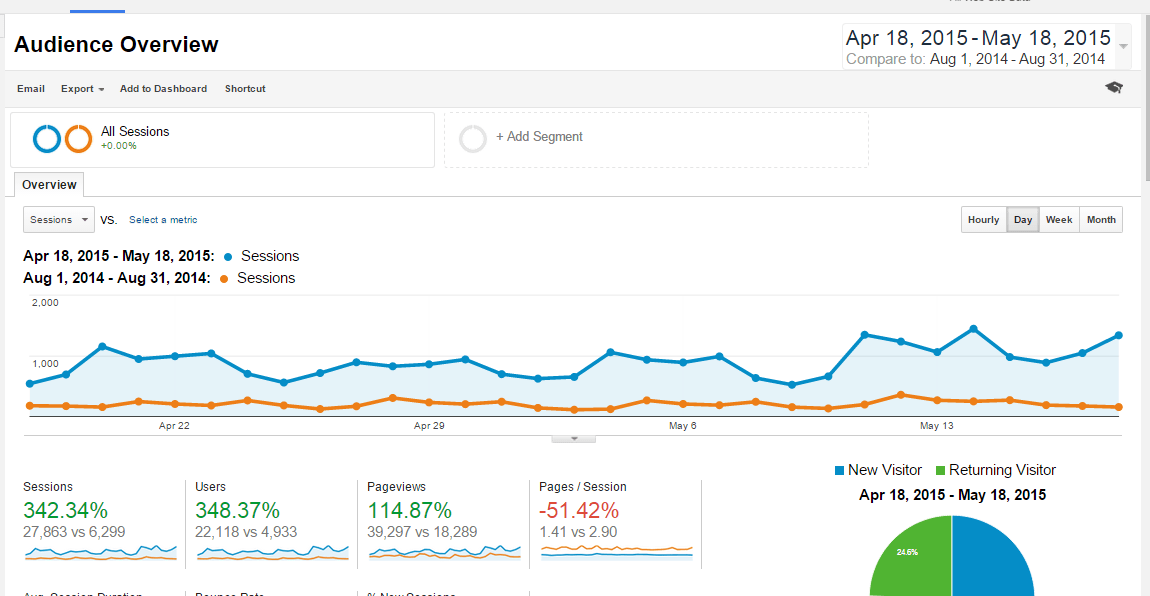
Instead of the 21 email subscribers she used to get every week, she now brings in a baller 214+:
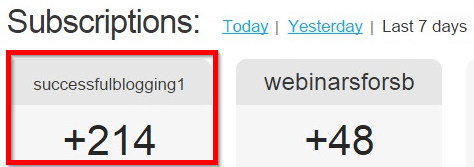
But most important of all, her business has grown like a beanstalk.
In the 3-months she started to take content promotion seriously, Sue’s sales increased by 283%:
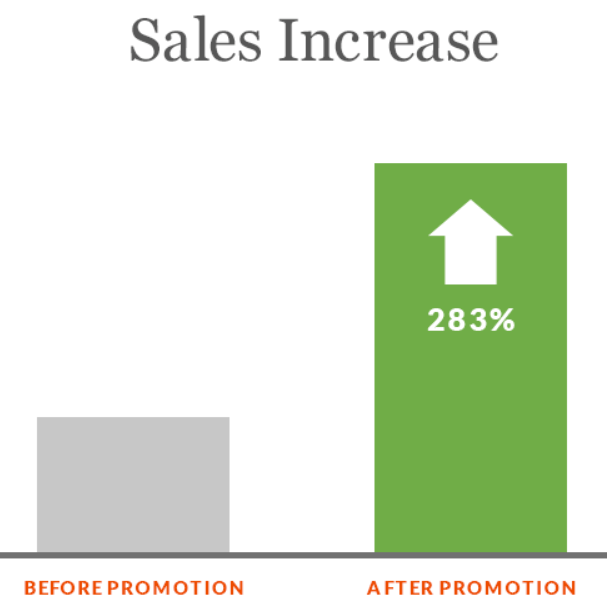
How did she do it?
Keep reading…
Let’s Zoom In and See a Recent Example
Because Sue strategically promotes her content, she consistently generates A LOT of traffic, backlinks and comments.
For example, Sue recently published (and promoted) a post called: How To Start A Blog And Make Money.
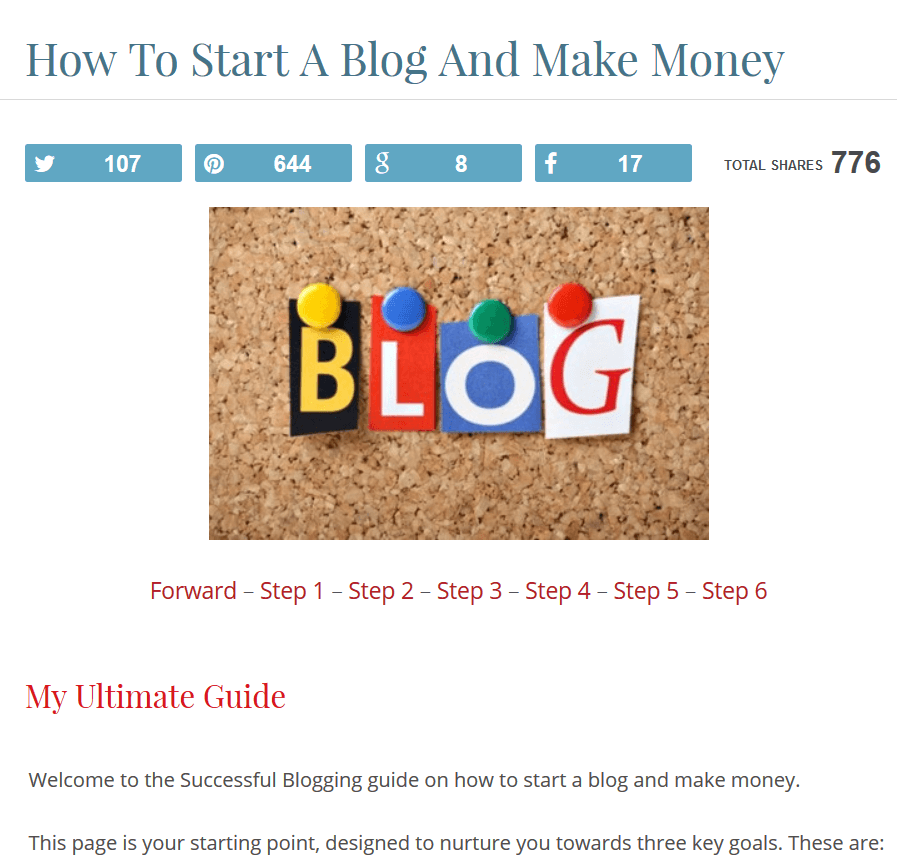
That post generated an impressive 776 social shares.

And because of all the buzz and shares, Sue’s post brought in a spike of traffic in the first week…

…and 4,500 total unique visitors to date.
Her secret?
She strategically promotes everything she publishes.
Now Sue may look like a natural content promoter, but the truth is bit more complex…
How Sue Cracked The “Content Promotion” Code
Like I mentioned to you before, Sue’s first stab at content marketing was a huge failure.
As Sue puts it:
I was consistently publishing a new post once a week. I would put the blog posts on social media and that’s about it. My numbers were depressing. I was getting about 5 comments per post and hardly any social shares.
For example, here’s one of Sue’s early posts:
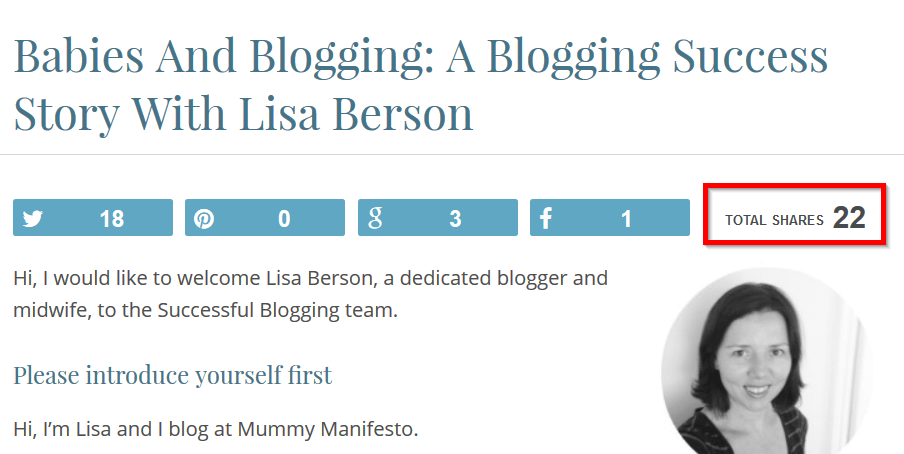
Yes, that’s 22 shares…total.
Flash forward to today…
…and here are the social shares from one of Sue’s recent posts:
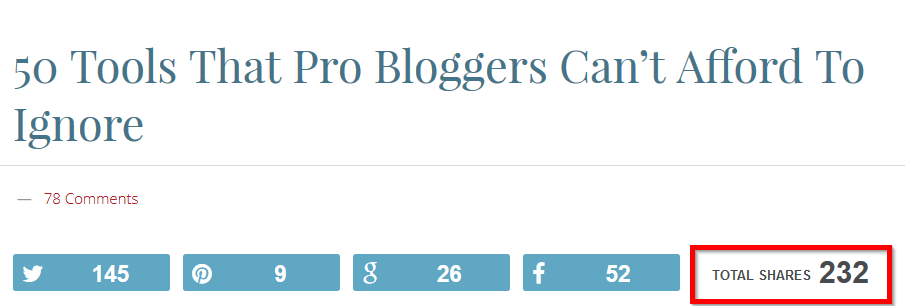
That’s 10x more shares.
How is this possible?
According to Sue, she invested more effort towards creating epic blog posts…
…but she also spent more time promoting what she wrote.
According to Sue:
Before I’d publish a post and share it on Twitter and Facebook. Now I also do blogger outreach – I contact other influential bloggers when I have a great post coming out and ask them to share it. And a lot of them do!
While Sue’s results may look remarkable at first (and they ARE impressive), her results aren’t mysterious.
It’s because she ditched The Publish and Pray Approach…
…and decided to embrace strategic content promotion.
And That, My Friend, Is The Clincher
Believe it or not, but I used to struggle with SEO and content marketing.
Big time.
In fact, my first few sites were huge flops.
I remember one day I was staring at my laptop screen wondering if I would ever figure this “whole SEO thing” out.
I was this close to turning my back on SEO…for good.
Fortunately, I didn’t throw in the towel. Instead, I decided to test EVERYTHING.
And after years of experimenting, I learned a valuable lesson about online marketing…
…a lesson that I wish someone handed to me on Day 1:
Big Lesson:
Most so-called SEO “experts” tell you: “publish great content and the backlinks and rankings will take care of themselves”.
(This is what I call “The Publish and Pray Approach”)
Through years of testing I’ve found that first page rankings don’t come from publishing great content.
Instead, first page rankings are a direct result of strategically promoting your content the right way.
And that’s exactly why Sue succeeds where many others fail.
More Proof That Content Promotion Can Be “The Difference Maker”
Here’s the truth:
The strategies that Sue uses can be used by anyone that wants more traffic and higher Google rankings.
In fact, I’ve taught my proven content promotion strategies to over 850 students from 33 different countries.
And I’ve seen similar results from them, including:
Giovanni Dienstmann
Giovanni is the founder of LiveandDare.com.
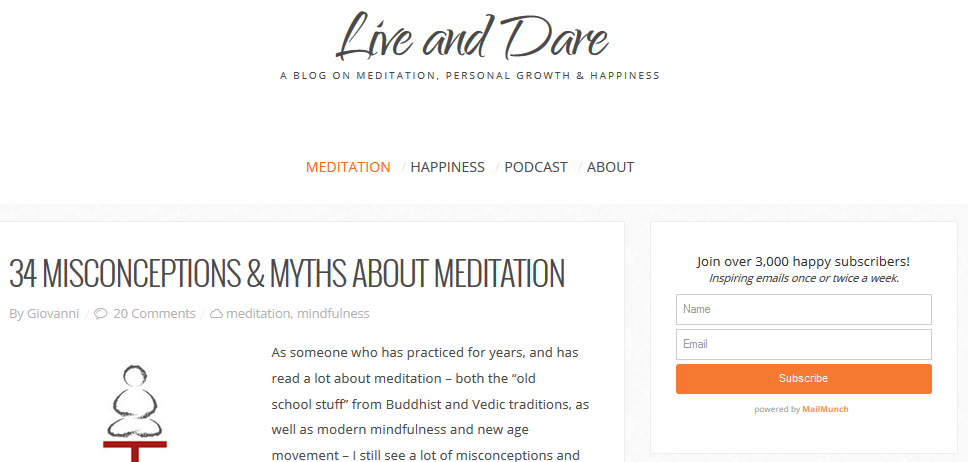
He recently created and promoted a guide that generated 33k visitors and (most importantly) 1,500 email subscribers:
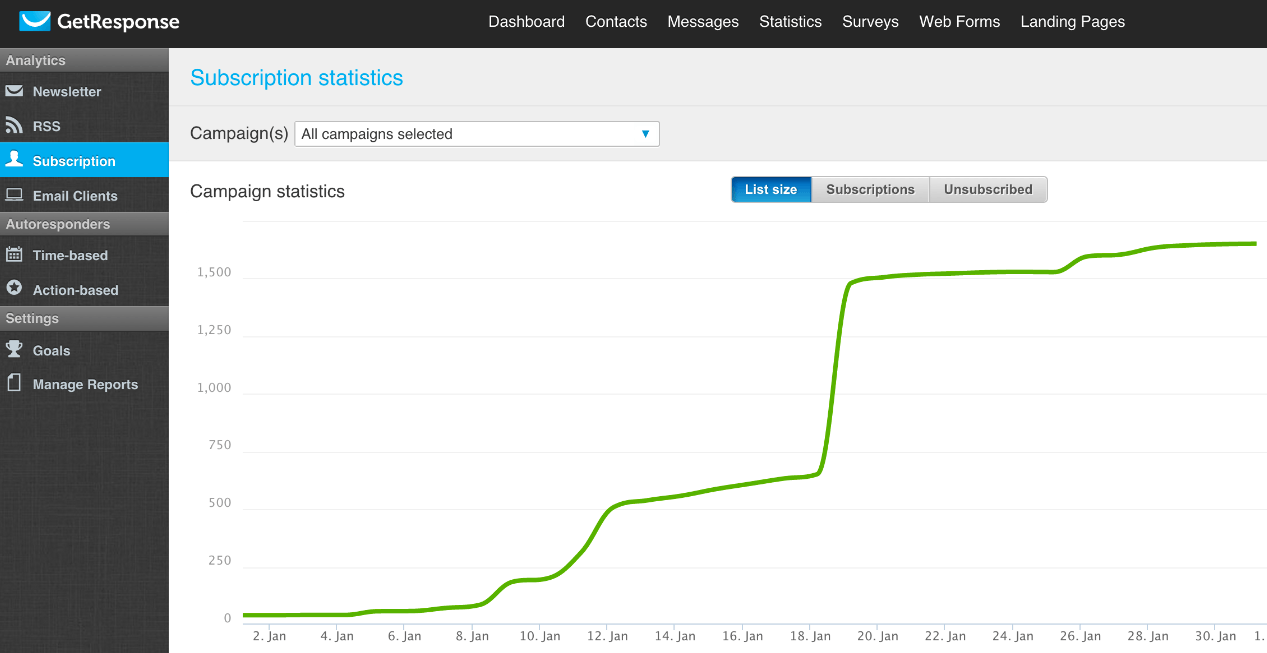
Not to mention an editorial backlink from The Huffington Post.
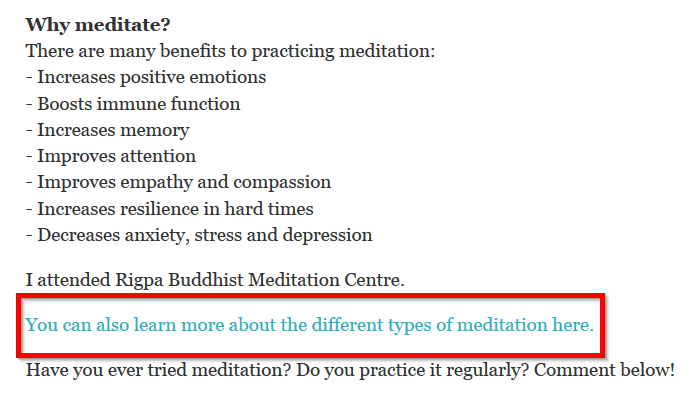
Not bad…not bad at all.
Christopher Laursen
Chris runs EuropeanDomainCentre.com.
Chris strategically promoted an infographic about domain names that’s brought in over 34,000 total pageviews:
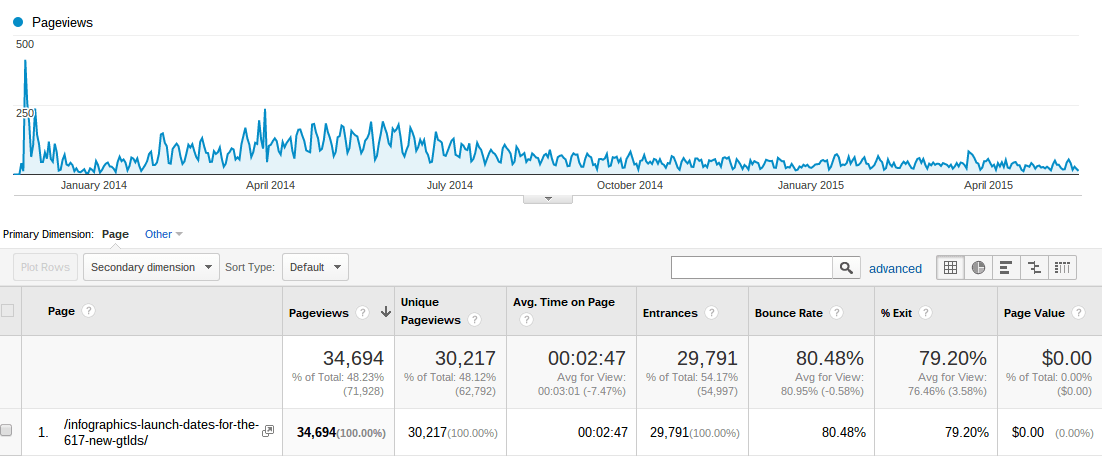
It’s also helped him build 35 contextual backlinks. Like this one from his competitor:

The question is:
How did they do it?
And more importantly, how can you do the exact thing?
It all starts with 2 simple steps…
Step #1: First, Find Someone That Wants to Share YOUR Content with THEIR Audience
It’s funny:
A lot of people ask me for the word-for-word email scripts that I use to promote my content.
OK so I’m not afraid to brag a little bit here…
Considering the fact that I’ve sent (and tested) over 6,000 outreach emails, my scripts convert GREAT.
But here’s the truth:
Your email script is only one SMALL part of content promotion.
Here’s A Story To Illustrate What I Mean…
A few weeks back I get this email out of the blue:
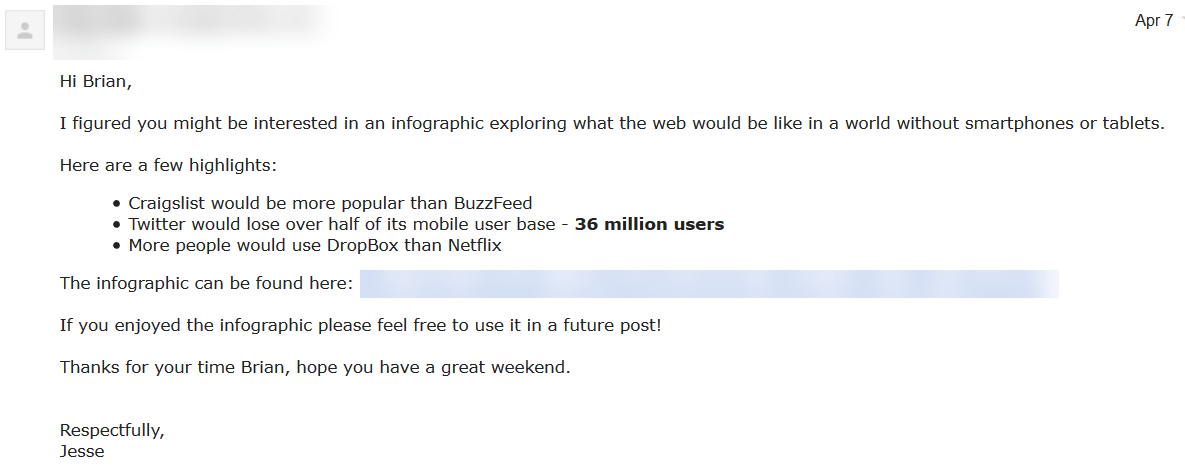
What’s wrong with this guy’s email?
Well to be honest with you…A LOT.
But let’s focus on the issue that forced my hand to the “delete” button:
I wasn’t going to share his content…EVER.
Why?
My interest in smartphones begins and ends with me taking out my iPhone to read ESPN.com on the subway.
Not to mention the fact that I’ve NEVER covered smartphones here on the blog.
That means his script could have been damn-near perfect and it wouldn’t have mattered.
The bottom line?
Because his content wasn’t aligned with my audience’s interests, I wasn’t going to share it…
…no matter what he said in that email.
Now, Don’t Get Me Wrong Here
I’m not some jerk who laughs like a supervillian while deleting outreach emails.
In fact, I share people’s stuff all the time.
For example, here’s an outreach email I got a few weeks back:

Here’s the truth…
David’s script could definitely use some work.
But he nailed the most important element of content promotion:
David found someone who was already interested in his content’s topic (me).
And because of that, I happily tweeted it out:
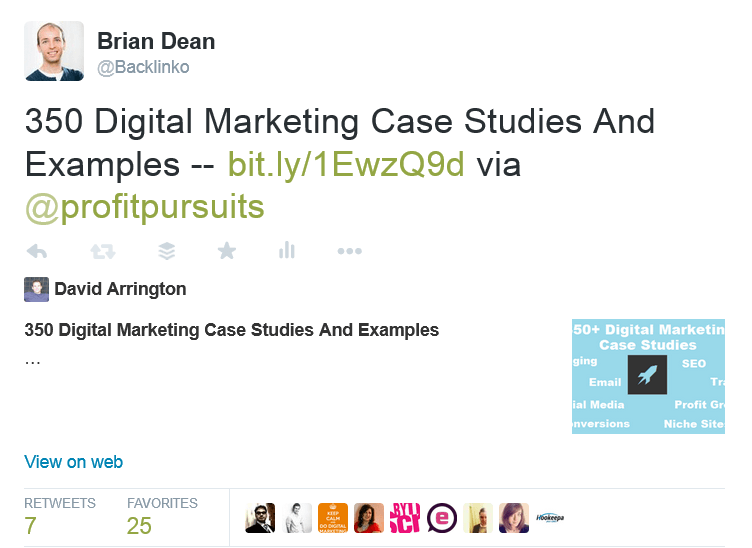
The thing is:
Once you’ve found someone that’s interested in your content’s topic, content promotion gets 10x easier.
How About Another Example of Successful Content Promo in Action?
A few months back I published a post called 16 Actionable SEO Copywriting Secrets That Will Drive More Traffic To Your Site:
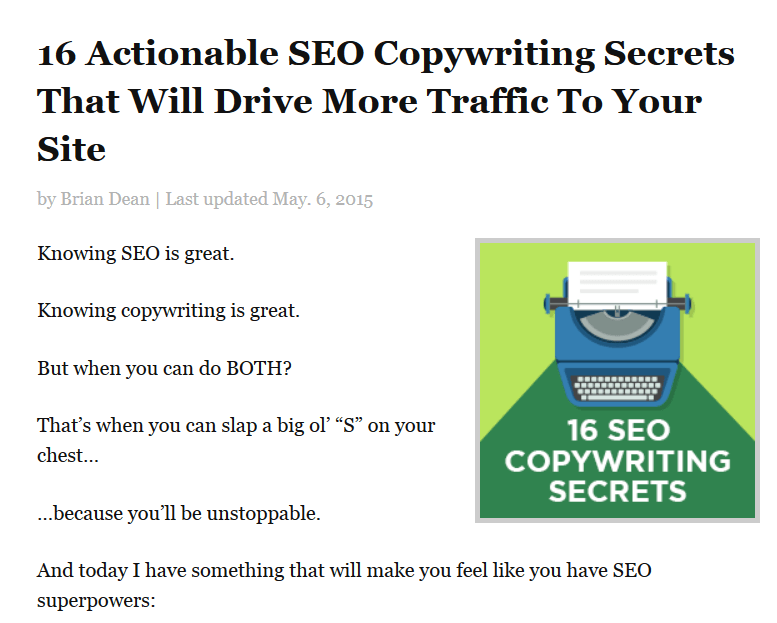
And to promote it, I reached out to a bunch of people that I KNEW were super-interested in the topic of “SEO copywriting”.
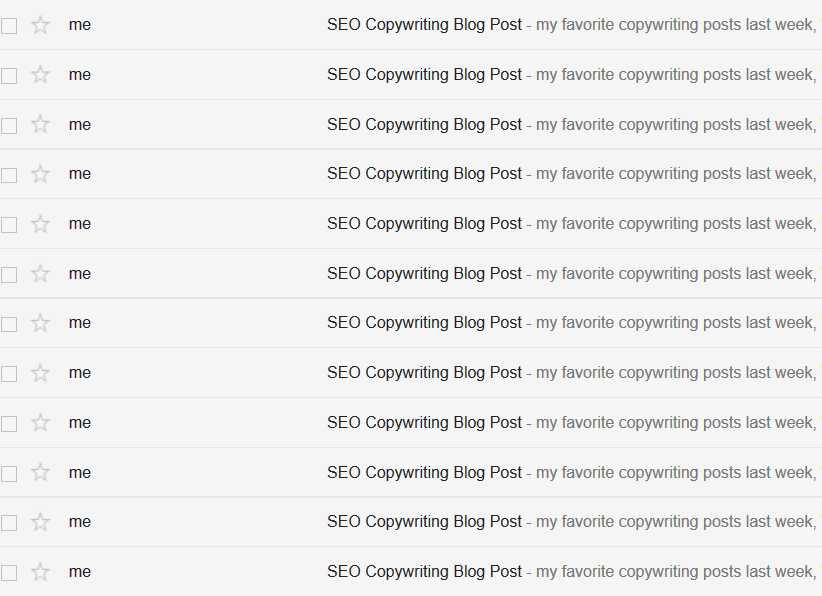
(If you’re curious about what I sent to these people, stay tuned. I’m going to cover that next week)
And because my content fit their interests (and their audience’s interests) like a glove, they happily shared and linked:

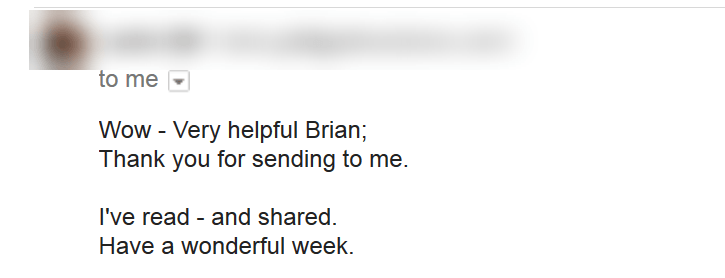

Takeway Lesson: If you’re serious about content promotion, step #1 is to find people that are already interested in your topic.
Step #2: Next, Give Them a Heads Up About Your Content
This might sound simple, but stay with me…
Now that you’ve found someone that’s genuinely interested in what you published, it’s time to give them a quick heads up.
Before I show you an example of what to do, let’s take another look at a bad outreach email that came across my desk this week:
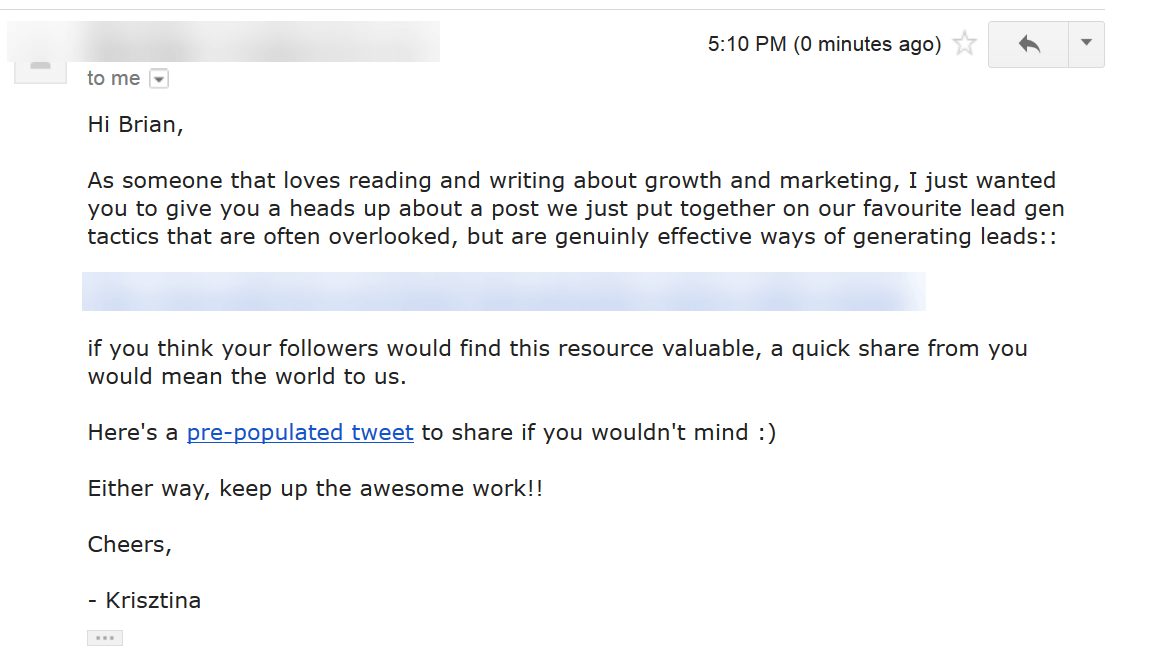
Like I mentioned before:
Nailing the topic is KEY.
And Kristztina actually did a decent job in that department (I’ve published a lot of content about list building).
But here’s the part I want you to focus on right now:
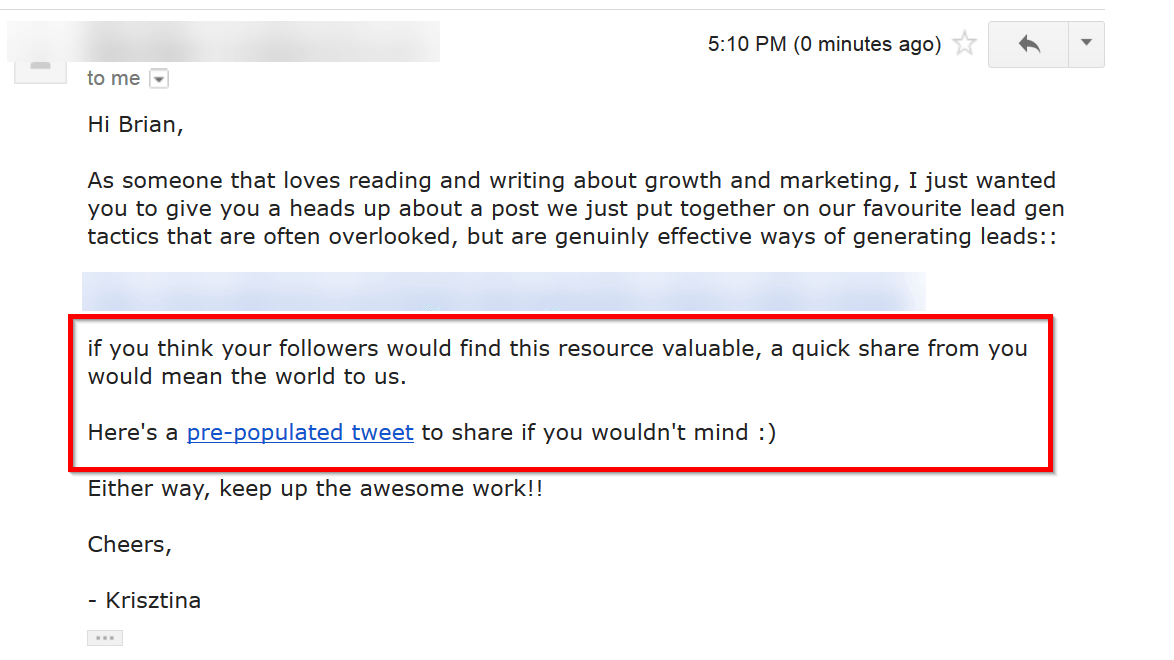
Think about that for a second:
She’s asking me to share her post …before I even said I liked it!
That’s the online version of getting a business card shoved in your face.
Not cool.
And because she was waaaaay too pushy, I hit “delete”.
In Sharp Contrast, Let’s Look at a Great (Non-Pushy) Email I Received From Darren:
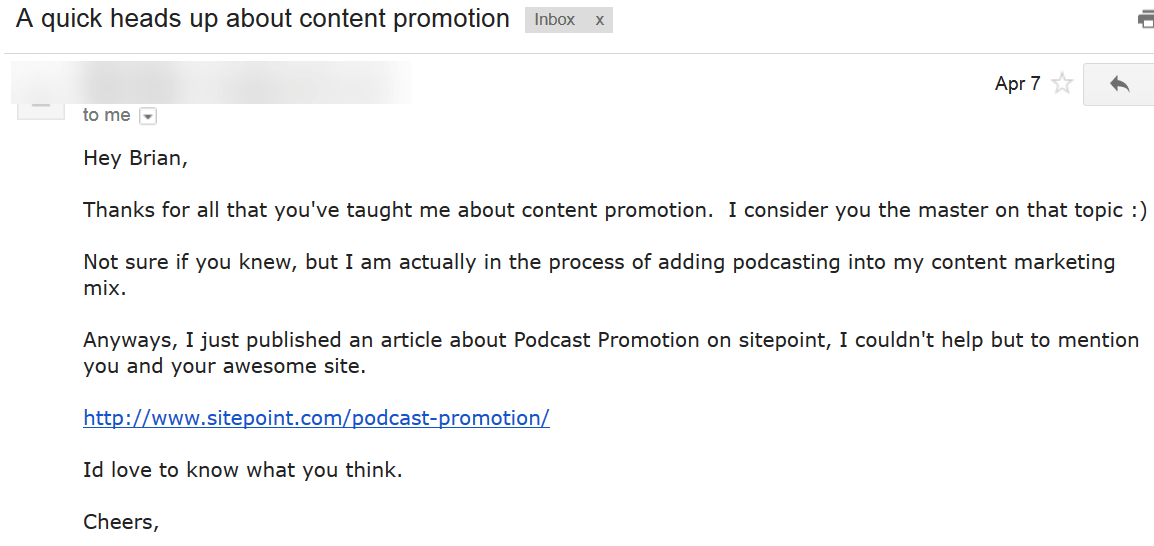
That email is so good I wanted to print it out, frame it, and hang it on my wall.
As you can probably guess from reading this post, I’m a big fan of the topic of “content promotion”.
So Darren definitely found the right person to reach out to.
And his email was personalized and non-pushy.
He didn’t say: “share it with your followers”.
He didn’t say: “link to it from a blog post”.
He said: “I’d love to know what you think”.
I thought the post was solid so I tweeted it out:
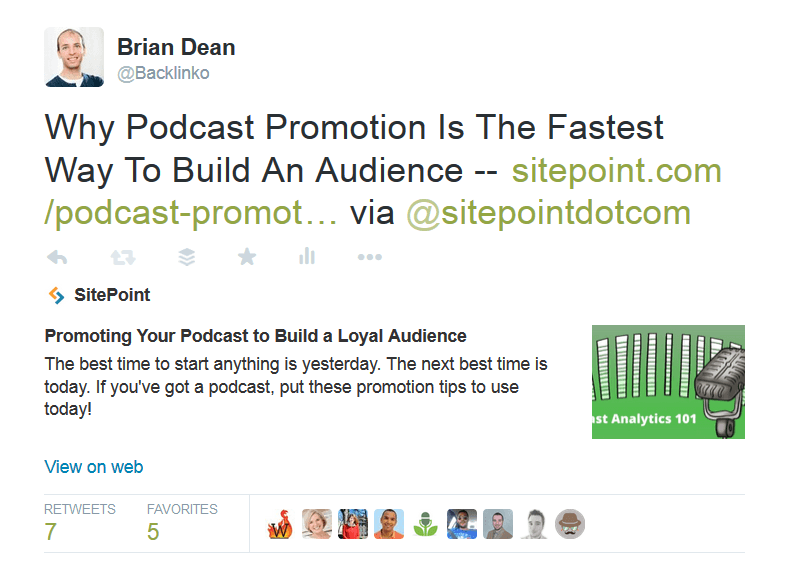
Also, because he shared something with me that I enjoyed reading, Darren has built a direct line with me.
The next time he publishes something similar, he can email me again and I’ll probably share it.
All from a single email that never asked for anything.
Crazy, right?
Takeway Lesson: Your goal with content promotion is to get your content in front of the right people. That’s it.